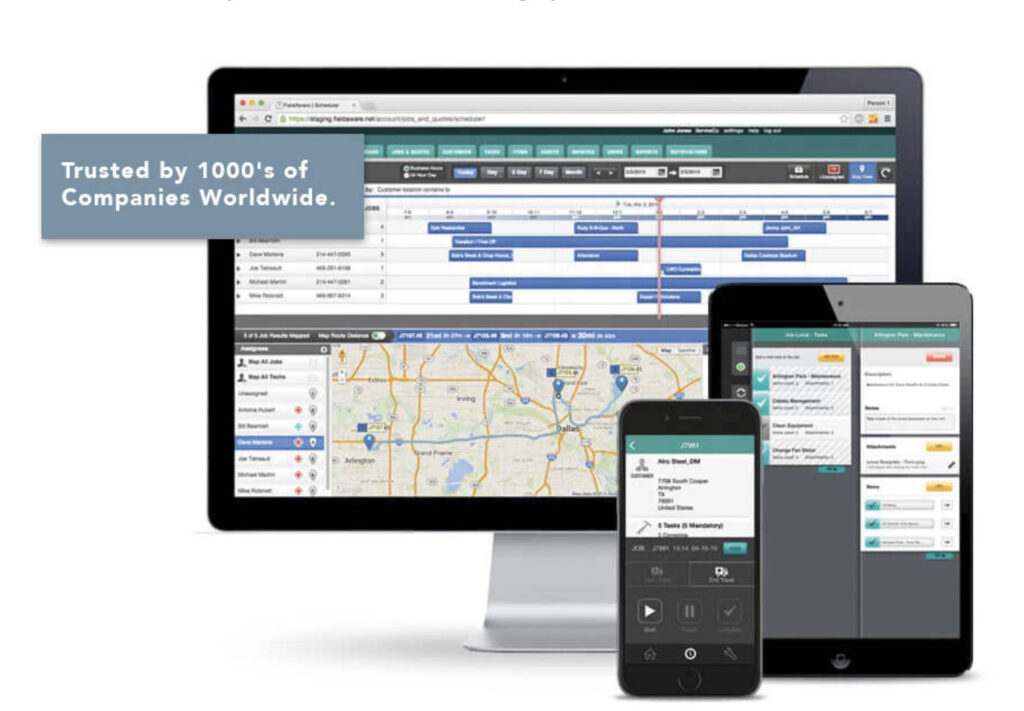The Emergence of A Hybrid Support Model – Fad or Future?
Marc Tatarsky, SVP Marketing, FieldAware, reflects on the findings of a major research project undertaken in partnership with Field Service News and asks whether the trends that study appears to reveal will become a permanent part of the new normal as we look to a post-pandemic world…
As we come to the end of a tumultuous 2020, the speed of change in the field service sector continues to evolve at what feels like a speed of light pace. And the change is still happening – more so than many of us would prefer or could have predicted.
While there is an overarching optimism in the field service sector, the world is still grappling with getting past recovering from the pandemic and working to move into a full restoration mode.
With vaccines on the horizon, the focus is on establishing the new operating normal and paving the way for growth.
At FieldAware, we look to stay in tune with customer needs and market trends. As I reflect on our market view through 2018-19, we saw early adopters and visionaries defining the “what” of new best-in-class services and offerings such as IoT and remote assist.
As we initially encountered the global pandemic in March, we engaged in a research program with the late Bill Pollock, from Strategies for Growth, to establish a baseline of the impact the crisis would have on these services. As the pandemic’s magnitude continued to evolve, our research immediately shifted focus to measure the crisis’s repercussions and establish a Year Zero/New Normal benchmark.
The ripple effects have been more pronounced and long-lasting than anyone initially anticipated.
Yet, our research with Field Service News revealed optimism biased towards growth with three quarters (76%) of field service companies focusing on growth rather than survival.
This optimism appears to be bolstered by accelerated investment in digitization and the enablement of the best-in-class services required to deliver essential services in the new operating environment.
Best-in-class service and capabilities – the New Normal – how did we get here?
As my colleague, Steve Mason, COO at FieldAware, likes to say, “Gradually…Then Suddenly”, referring to a great Hemingway quote from the classic novel, The Sun Also Rises. This sediment perfectly surmises how several critical best-in-class services have rapidly become the “New Normal.”
Sure, the pandemic has accelerated our need or faster adoption, but we have been plodding away at the core components of these best-in-class services like remote assist for years. As a workforce, we have been getting comfortable with remote interactions, building a knowledge library of best practices and likely responses, and mobile advancements have helped to shepherd these advanced technologies into our everyday lives and activities.
What the pandemic did was to mandate remote-work commonplace for EVERYONE, not just those that were early adopters/visionaries. And so, it is, suddenly, best-in-class services like remote monitoring/assist and IoT sensing are now the “New Normal.” Not just some nice-to-have if you have time to tap into it, but a staple in today’s field service environment.
Is The Hybrid-model Here To Stay?
I don’t think this is a fad at all. There is no question that physical intervention as the first line of defense for field service will be a thing of the past even once COVID passes. However, I think the emphasis on hybrid is key to its longevity and success.
Our research indicated that almost half (48%) of respondents stated that they believe their customers will still perceive a greater value in face-to-face service calls, while only 13% believed that their customers would see greater value in remote services alone and just over a third (39%) state that they believe their customers will see equal value in both.
These shifting trends led FieldAware down a path towards a new approach to thinking about and package our platform as a field service hub. The hub approach involves expanding and strengthening the depth of our solution’s “core” field service capabilities to create a system-of-record for all field service activities (robust technician enablement, advanced scheduling & optimization, workforce management, etc.).
It also requires broader exploiting our open API/architecture to expand back-office connectivity and build embedded capabilities to tap into best-of-breed technologies to easily and affordably provide access to these best-in-class solutions.
The service hub is a different approach. It enables service providers to establish new best-in-class service delivery models by building upon the digital field service infrastructure that FieldAware provides.
This is achieved by enabling best-of-breed specialist point solutions to be quickly and affordably integrated into the service hub to form an integral part of a new service delivery model workflow. Providing field service providers the ability to quickly ramp-up or expand their service delivery capabilities to meet new market demands.
As Kris Oldland wrote in our study summary, “We truly are on the cusp of a new era of field service, our industry has slowly been building the blocks of evolution across the last decade. COVID-19 has simply put us all on the same page.”
The infrastructure for connected service has been built. The thinking for advanced services has been considered. Now, as a result of necessity, the digital transformation required has been accelerated.
This powerful combination of events and solution evolution paves the way for the success of a hybrid model that delivers value and helps drive additional growth.
Further Reading:
- Read more News and Features from FieldAware
- Read more from Field Service News Research
- Visit FieldAware’s website
- Read more by Marc Tatarsky
- Read more about digital transformation in service
- Read more about field service strategies
- Check out 24 premium resources on recovering from the pandemic (PRO)
- Check out 25 premium resources from Field Service News Research (PRO)

See FieldAware in action by requesting your demo now.
FieldAware is a top-rated mobile field service management software that lets you easily schedule and dispatch field workers, assign jobs, invoice customers and more.


